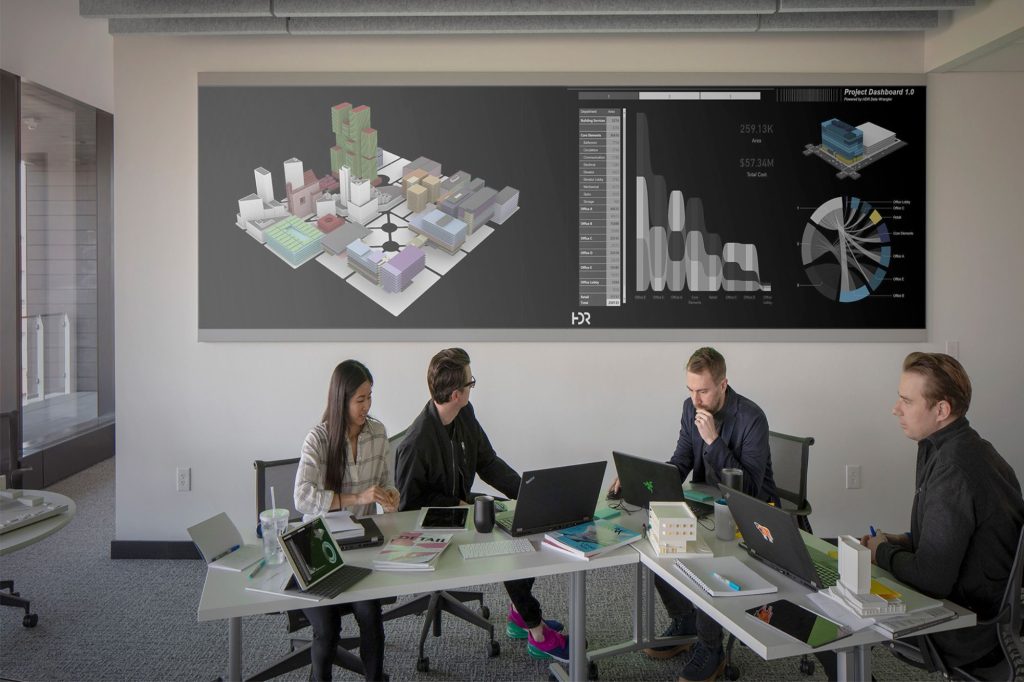
Upskilling graduates and embracing innovation at HDR
Upskilling graduates and embracing innovation at HDR
Share
In the final of a two part innovation in architecture series, Australian Design Review spoke with HDR regional managing principal Cate Cowlishaw.
HDR is one of the leading practice partners supporting Australian Design Review’s 30UNDER30 Architects and Innovators of the Built World program.
Cowlishaw explores how embracing the intersection of technology, innovation and collaboration will drive successful architectural outcomes and nurture the architects of the future.
Collaboration
ADR: Collaboration often plays a vital role in successful architectural projects. How does your practice approach collaboration, both internally among team members and externally with clients and stakeholders?
Cate Cowlishaw: Inherently, architecture is a deeply collaborative practice that informs our ability to design and deliver at the intersection of design thinking and technical practice. Whether collaborating with colleagues, clients, contractors or the end user, meaningful collaboration is an integral part of our design process at HDR.
Excitingly, COVID-19 has broken down geographic barriers and is allowing us to lean on our global knowledge base to inform our local practices and collaborate with global subject matter experts with ease and accessibility. Our sharing culture means that staff can upskill across a range of sectors and learn from the best in the business.
Collaboration with clients, stakeholders and end users is similarly enabling us to transform the most challenging projects into purposeful architecture and fostering a culture of sharing between partners. The co-design process is widening our collaborator network and includes a much wider range of insights from broader stakeholders and end users.
Examples include working with Indigenous and Connecting with Country consultants to educate and inspire us to design precincts for land and Country; conducting user groups with scientists and researchers to transform education and laboratory research facilities so that they better serve the end-user.
ADR: Sustainability and environmental consciousness are increasingly important in modern architecture. Could you share some of the sustainable design principles or practices that your firm employs to create more environmentally friendly structures?
Cate Cowlishaw: The more we learn about sustainability, the harder it’s becoming to capture its many facets — environmental, social and governance — with a single word, which is why we have created a template for holistic, highly renewable, and inclusive design that looks towards truly regenerative design and reconnects humans and nature through the continuous renewal of evolving socio-ecological systems.
This template, comprising resilience, reconciliation, and regeneration, forms a strong foundation and guiding force on our path towards a regenerative future at HDR.

Technology innovation
ADR: The architectural landscape is constantly evolving with innovations in technology. How does your firm leverage cutting-edge technologies such as AI, BIM, or VR/AR to enhance the design and construction process, and what benefits do these technologies bring to your projects?
Cate Cowlishaw: Increasingly, architects are moving away from traditional workflows of design and embracing computational design tools and generative design. Not only is this allowing us to validate metrics faster and rapidly prototype design solutions for clients, but it also enables us to look at how digital design and computer augmentation can aid both creativity and sustainability within the built environment.
Using our own data management infrastructure, we are currently developing a suite of in-house innovative and proprietary tools that can assist our clients in making informed decisions about space utilisation, operating cost, embodied carbon and occupancies.
Examples include a master planning tool that can provide developers, universities and major infrastructure organisations with a roadmap for optimal building stock utilisation, and a Lab Planner Tool that showcases cutting-edge, modular laboratory planning concepts underpinned by right-sizing and flexibility.
Excitingly, using digital processes and sub-processes, we now have the ability to consider architectural design, structural components and building systems in real-time.

Future of Architectural Practices
ADR: Considering these innovations in technology, how do you think the architects and innovators of the built world will need to evolve skill sets to meet the demands of the future architectural practice?
Cate Cowlishaw: We are currently observing a significant shift in our workflow and practitioners will need to embrace new tools and processes to keep up with the pace of change.
Hand-drawn sketches have been replaced by digital illustrations, and our architectural design process has evolved from line-based drawings to object-oriented, multi-dimensional, data-rich information models such as building information modelling (BIM) and a geographic information system (GIS).
Platforms like Autodesk, Graphisoft, Esri and dRofus are enabling improved integration, coordination, and cross-disciplinary collaboration across our practice – and designers are upskilling as a result.
The profession is at a technological crossroads and as we work towards a future that embraces hybrid intelligence we will continue to rely on our own creativity and intuition because more options will ultimately give us time back to consider the human experience.
Australian Design Review 30UNDER30 Architects and Innovators of the Built World stream is brought to you by major sponsor Neolith, alongside Miele and Tongue & Groove.
The program is supported by practice partners BVN, HDR INC, SJB, Richard Stanisich, Williams Burton Leopardi, and Billard Leece Partnership.
Images supplied by HDR
Want to know more? Check out the 30UNDER30 Architects and Innovators of the Built World program.
You Might also Like




























